1911 Wheat Penny Coin Value: How Much Is It Worth?
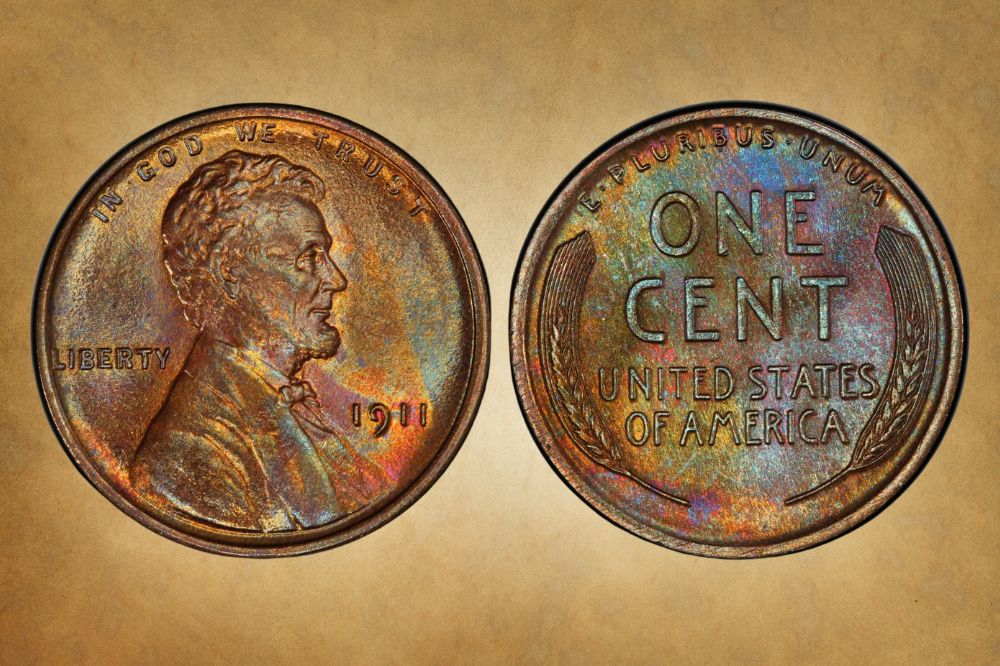
1911 was fairly early in the Lincoln Penny’s lifetime, and it has three key markers. It was the first year for Denver pennies, it was a time before the VDB drama was resolved, and it was during the era of matte proof experimentation. So let’s assess the 1911 Wheat Penny Value.
1911 Wheat Penny Value Chart |
|||||||
| Mint Mark | Good G 4 | Fine
F 12 |
Extremely Fine
EF 40 |
About Uncirculated
AU 50 |
Uncirculated MS 60 | Mint State
MS 63 |
Proof PR/PF 65 |
| 1911 (P) No Mint Mark Wheat Penny Value | $0.50 | $1.71 | $6.64 | $13 | $24 | $55 | $607 |
| 1911-S
Wheat Penny Value |
$55 | $67 | $94 | $121 | $205 | $264 | No S-Proofs |
| 1911-D
Wheat Penny Value |
$6.64 | $11 | $55 | $83 | $107 | $140 | No D-Proofs |
1911 Wheat Penny Value Guide
Numismatists are people who study and collect coins professionally, and they take a keen interest in mint marks. These are tiny initials that tell you which branch of the US Mint made a particular coin, and they directly affect resale value. 1911 was the first year that the Denver Mint made pennies. Let’s see how this played out in terms of the 1911 Wheat Penny’s pricing.
1911 (P) No Mint Mark Wheat Penny Value
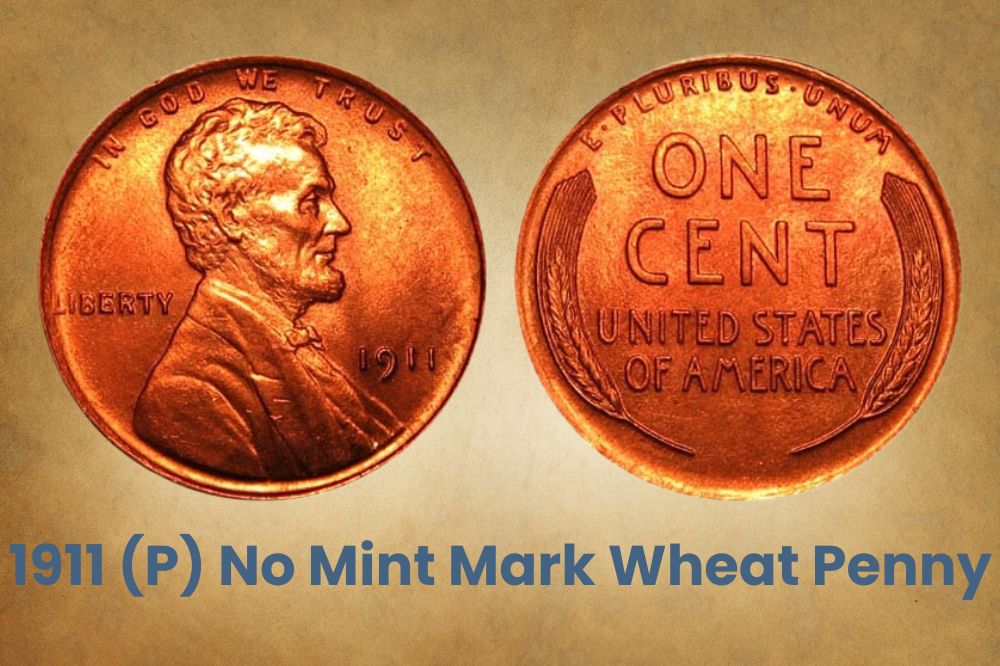
In 1911, the Philadelphia Mint made 101,177,787 Wheat Pennies and about 2K proof coins. We’ll talk about the proof coins later, but the auction record for an MS 65 BN was $3,290 in March 2019. MS 65 RBs are more common, so they were $1,175 in August 2012. The MS 67 RD record was $21,850 in September 2007. Current estimates are $65,000 for MS 68 RD.
1911-S Wheat Penny Value
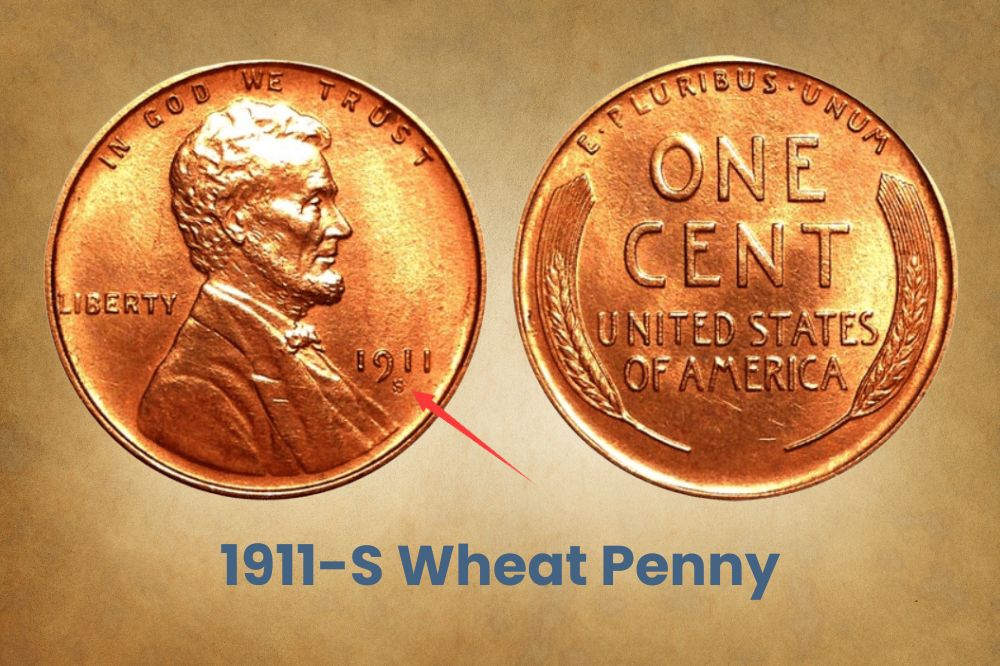
The San Francisco Mint pressed 4,026,000 Wheat Pennies. They all had the S Mint Mark, and the record auction price for an MS 65 BN was $2,991 way back in May 2006. An MS 66 RB went for $3,840 in November 2019, and an MS 66 RD was $27,600 in May 2007. But recent sales are much lower, with an MS 66 only auctioning for $13,200 in August 2022.
1911-D Wheat Penny Value
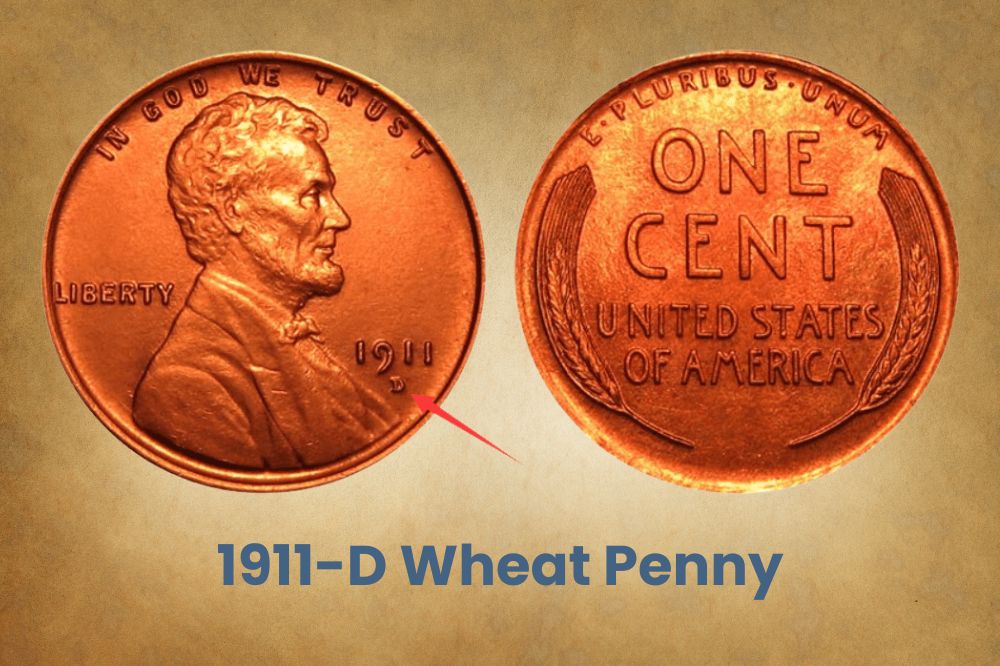
During its 1911 debut, the Denver Mint coined 12,672,000 Wheat Pennies with the D Mint Mark. The record sale for a mid-grade AU 58 BN was $1,438 in August 2010. More recently, in April 2022, an MS 63 BN sold for $1,500 on eBay. Still in 2022, a 1911-D Wheat Penny graded MS 67 RD sold for $66,000 in August. PCGS has only graded three of these so far.
1911 (P) Proof Wheat Penny Value
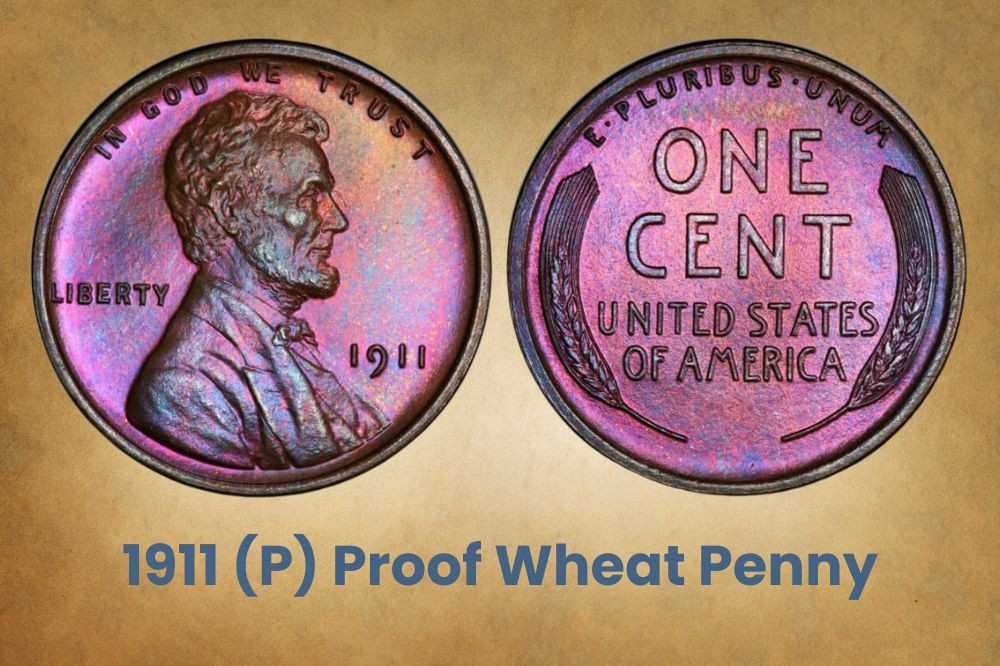
Generally speaking, proof coins can be matte or mirror-like, though matte coins were only made from 1909 to 1917. The technique was adopted to suit curvy coins like the Lincoln Cent. But before 1909 and after 1936 (since no proofs were made between 1918 and 1935), dies were scrubbed with horsehair brushes to get a reflective field and devices were acid-washed.
This acid pickling gave the device a frosted finish, but it would weaken with every strike, so the first 50 to 100 coins had an extreme contrast between the field and the device. They were graded as Deep Cameo (DCAM) by PCGS or Ultra Cameo by NGC. The next 100 or so were graded Cameo and below that were regular proof coins. This technique was used until 1970.
Then from 1971, the mint introduced computerized lasers that could consistently frost the coins, meaning all modern proofs have DCAM or U-CAM contrast levels. To reinforce this mirror-like effect, proof coin planchets were – and still are – burnished before striking by tumbling them in a vat full of stainless steel balls, then rinsing off any debris that clung on.
But sometimes, you find a shiny coin that’s graded PL (Proof-Like) or DPL (Deep-Proof-Like). They’re probably from Uncirculated Sets and were separated from business strike coins as they left the mint. These sets were assembled by picking out the best quality satin-finish regular strike coins and selling them directly to collectors before they got damaged.
The Matte Proofs of 1911
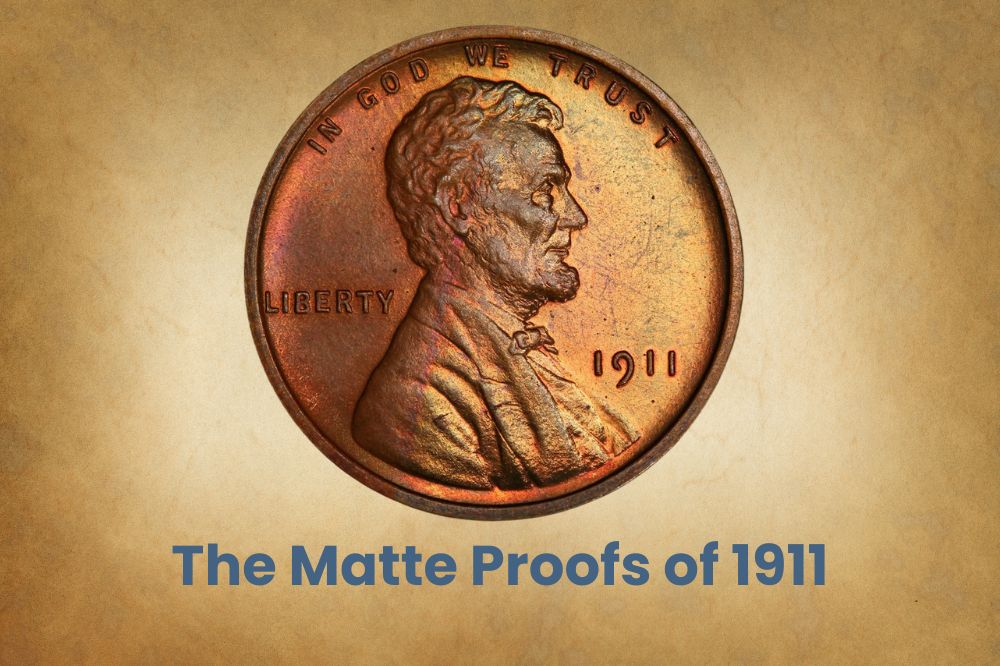
As we mentioned, 1909 to 1917 proof coins were typically matte proofs. Their high-relief surfaces were tough to polish without damaging the design or losing details, so instead of pre-polishing the planchets, the mint sandblasted the dies and coins to create an attractively grainy matte finish. This technique was popular in Europe and perfected at the Paris Mint.
To keep the coins from being tarnished, they were packaged in special sulfur-infused tissue paper for added protection. Since proof coins often remain in their original casing, collectors would later notice some toning on the coins as a result of the sulfur, and this added even more resale value to these matte proof coins. In addition, pennies are graded by their color.
The highest grade is RD for red, followed by RB for reddish-brown, and finally BN for brown. In 1911, the Philadelphia Mint made 2,411 Matte Proof Wheat Pennies without mint marks. The record sale for a 1911 Matte Proof graded PR 67 BN was $8,225 in June 2017. A PR 66 RB was $14,688 in August 2014. A PR 66+ RD was $14,950 in 2005 and $14,100 in 2020.
Related Posts: 16 Most Valuable Wheat Penny Errors
1911 Wheat Penny Errors
Coins start out as sketches, which the artist will make into 8” models of rubber, plaster, and epoxy. The mint reducing machine will take several days to shrink these down to size in the form of a steel master hub. The master hub makes master dies, which make working hubs, and finally working dies. Until 1989, a mint mark was manually added to the working die.
After 1990, that mint mark was machined onto the die. These working dies eventually strike planchets to make coins. The hub, die, and planchet are all struck multiple times to impress the design correctly. (Except for Special Mint Sets or SMS coins, which are struck once using higher pressure settings.) If the metal moves between strikes, you can get various coin errors.
1911-D Wheat Penny D/D RPM Error
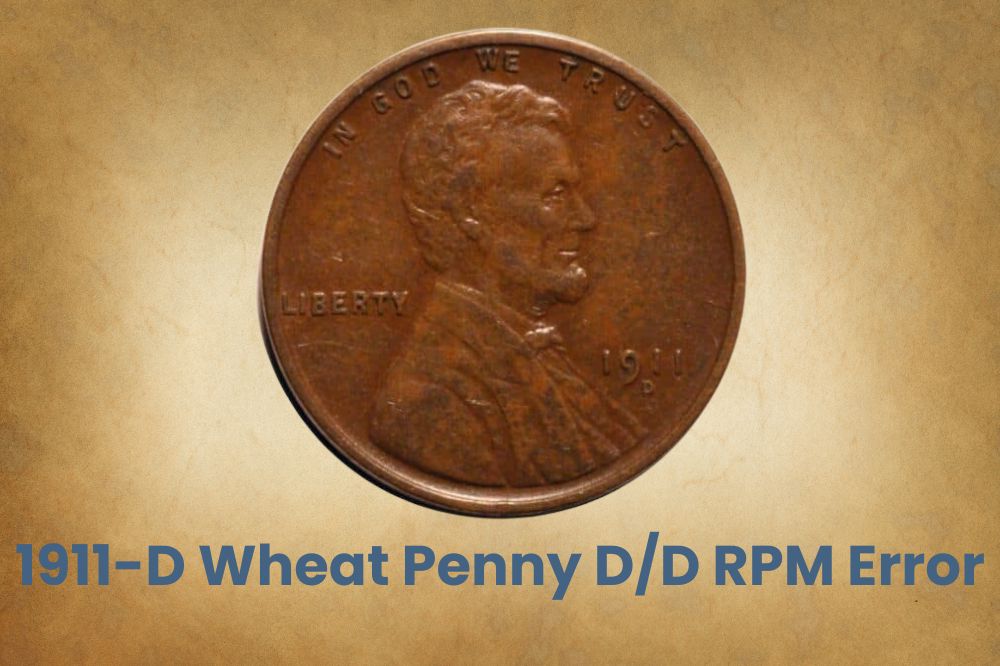
RPM means re-punched mint mark. It’s a doubling or tripling error that occurs when the second or third strike of the hand-punch slips slightly. If you check with a jeweler’s loupe or coin microscope, you can see traces of the earlier strike. An AU 58 BN was $398 in 2019, a VF 25 BN was $1,006 in October 2022, and an MS 64BN sold on eBay for $910 in July 2022.
1911-S Wheat Penny S/S RPM Error
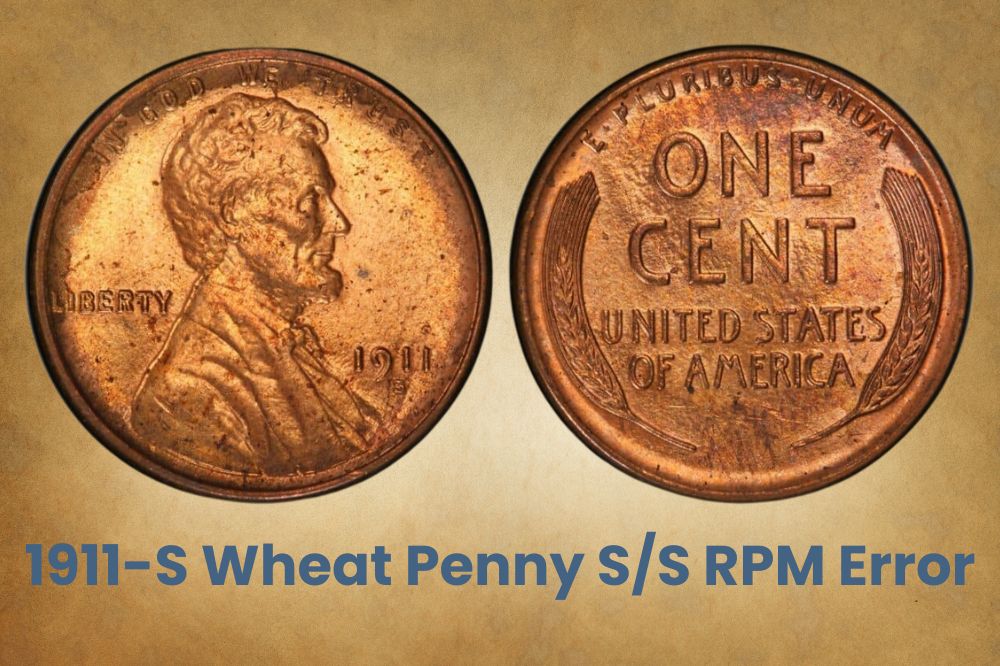
RPMs are written as D/D or S/S which reads as D over D or S over S. You don’t see them as often after 1990, because mint marks were machined instead of being hand-punched so mint mark errors were less likely. An S/S MS 65 BN was auctioned for $1,750 in May 2022 with an MS 65 RB selling slightly lower at $1,320 in April 2019. The current PCGS estimate is $900.
Related Posts: 19 Most Valuable Lincoln Memorial Penny Worth Money
History of the 1911 Wheat Penny
All pennies have Lincoln on the heads side, so they’re usually categorized by the design on the tails side. From 1909 to 1958, that was a pair of durum wheat stalks, hence the Wheat Penny. We call them pennies because that’s what they were called in the British Empire, and even in modern UK. Australian 1c coins are pennies too, but they switched to dollars in 1966.
For reference, the proper plural is pence, so you can still see ‘pence’ on the back of British coins. Americans and Australians now use cents, though we often call them pennies. Here in the United States, we started making our own coins in 1792. Before that, we used colonial coins from the British Empire and Spanish Coins from Mexico. Our earliest coins were silver.
They were designed by in-house mint engravers, and many of these coiners were born in England before their families came to the States. The focus of these coins was simplicity and minimal cost. Because of this, the coins often had low relief levels with visual concepts that were easy to press. Many nations put kings and queens on coins, including former colonies.
But some of the US Founding Fathers, particularly George Washington and Benjamin Franklin, advised against placing monarchs and other leaders. They preferred to have a symbolic image representing our new freedom. This meant early coins seemed plain and unimaginative compared to the classic coin styles engraved in Ancient Rome and Greece.
But starting in 1904, President Theodore Roosevelt requested US coins to look more like the artistic ones of old. He asked the mint to hire his friend Augustus Saint-Gaudens, a well-known sculptor. The target was to redesign the four gold eagle coins. When Saint-Gaudens died of cancer in 1907, his legacy continued via two of his assistants and one of his students.
The Ghost of Augustus Saint-Gaudens on US Coins
His successors designed the Lincoln Cent, Buffalo Nickel, Mercury Dime, and Walking Liberty Half Dollar. But let’s focus on the first Lincoln Cent aka the Wheat Penny by Victor David Brenner. He had worked directly with Saint-Gaudens and quickly produced sketches. You might be familiar with the Augustus Saint-Gaudens $20 coin aka the Gold Double Eagle.
Turns out Saint-Gaudens intended that design for the penny! But by the time Brenner took over, the brief had changed. Brenner was now asked to place Abraham Lincoln on the 1c coin. Lincoln was the 16th President of the United States and would be the first identifiable leader on US coins. But Brenner had a tough time getting his coin designs formally approved.
One of the issues was his insignia. Mint engravers signed their coins subtly on the portrait cut-off. But Brenner first placed his full surname on the front, and when that was shot down, he put VDB on the back. This made it into circulation before further protests. In the end, the option was to adjust these initials, which would take two weeks, or remove them altogether.
Since the latter option would only cause a three-day delay, and since the Chief Mint Engraver refused to have the coins stamped B for Brenner (which might be confused with his own B from Barber Coinage), Wheat Cents were scrubbed to remove the VDB. These initials weren’t reinstated until 1918 after Barber had passed away. So the 1911 Wheat Penny has no VDB.
But even with all this drama, the Lincoln Cent remains popular with the public. The mint still struggles to press it because it’s so unconventionally curvy, and in 2023, it costs twice its face value to make, but it’s still produced in large volumes. Every once in a while, someone raises the question of phasing it out or making it cheaper to mint. But so far, the penny prevails.
Related Posts: 19 Most Valuable Wheat Penny Worth Money
How to Identify 1911 Wheat Penny?
Using the right terms can help you look professional when you’re dealing with coin experts, so let’s go over the most important jargon. The process of making coins is called striking, and it’s done at the mint in a coin press. That’s why it’s sometimes referred to as coining or minting. Coins are struck on blank metal sheets that are punched into discs called planchets.
The striking is done using steel ‘rubber stamps’ called hubs and dies. The hub is used to make a die, then the die is used to make a coin. The front or heads side of a coin is called the obverse and the back or tails side is called the reverse. The thin sides that you flip are called edges. These can be smooth or plain, meaning they have no decorative detail or wording.
But they can also have ridges or ribs called reeds. The words on a coin are called legends or mottos while the images are called devices. The background of a coin is known as the field. The raised outer border of a coin is called the collar or rim, and it’s made using a detachable three-piece mold. On older coins, the rim sometimes has tooth-like beads called denticles.
The Obverse of the 1911 Wheat Penny
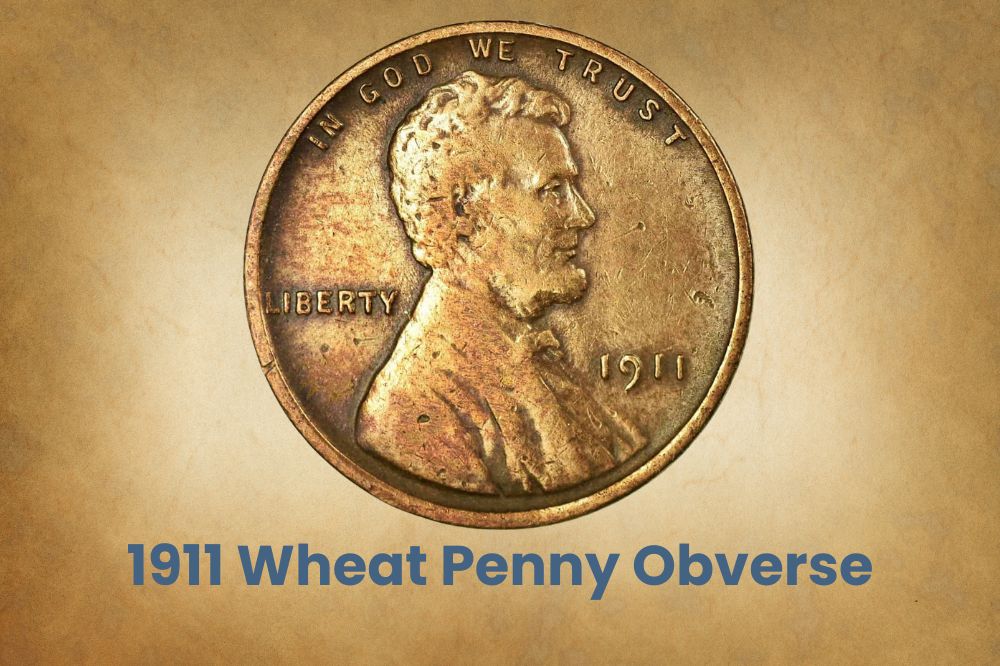
The obverse (heads side) of the 1911 Wheat Penny shows Abraham Lincoln in profile. He’s facing right, with the motto In God We Trust over his head. The legend Liberty is on left, behind his back, while the mint date and mint mark are on the right, in front of his chest. Due to the infamous VDB controversy, the 1911 Wheat Penny doesn’t have its designer’s initials.
The Reverse of the 1911 Wheat Penny
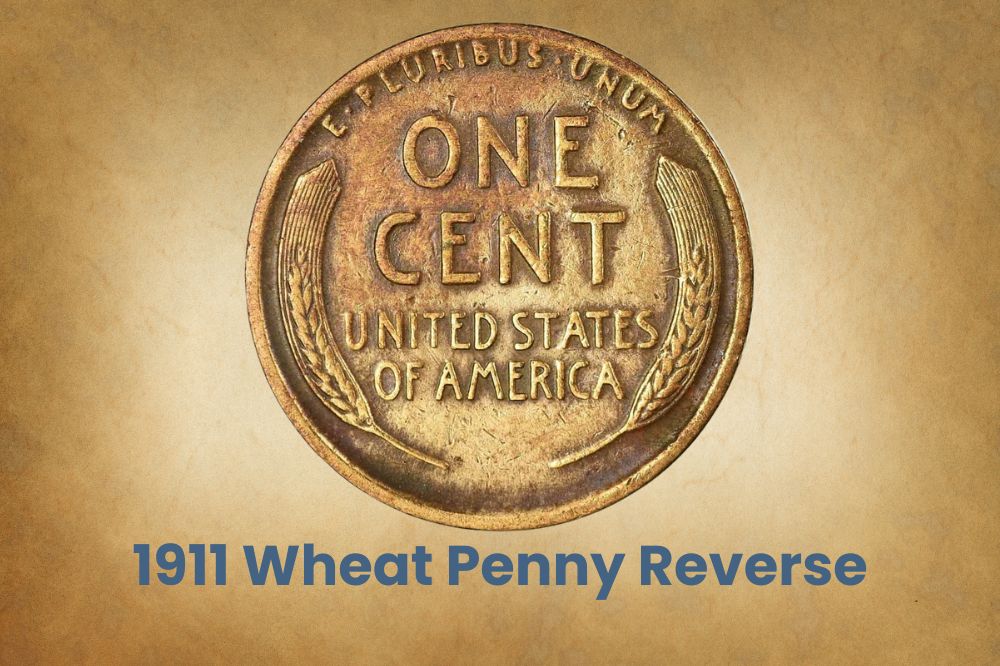
The reverse (tails side) of the 1911 Wheat Penny shows two ears of durum wheat lining the sides of the coin. Between the upper tips of these wheat sheaves sit the motto E Pluribus Unum, with dots on both sides of Pluribus. This runs along the top of the coin, followed by the denomination, One Cent. Finally comes the mid-sized legend United States of America.
Other Features of the 1911 Wheat Penny
The 1911 Wheat Penny was 95% copper with the remaining 5% in tin or zinc, though they sometimes mixed both. It was 19.05mm in diameter and weighed 3.11g. The coin has a plain or smooth edge without reeds. It was designed by Victor David Brenner, but most 1909 coins and all 1910 to 1917 coins had his initials scrubbed off. They were considered too advertorial.
